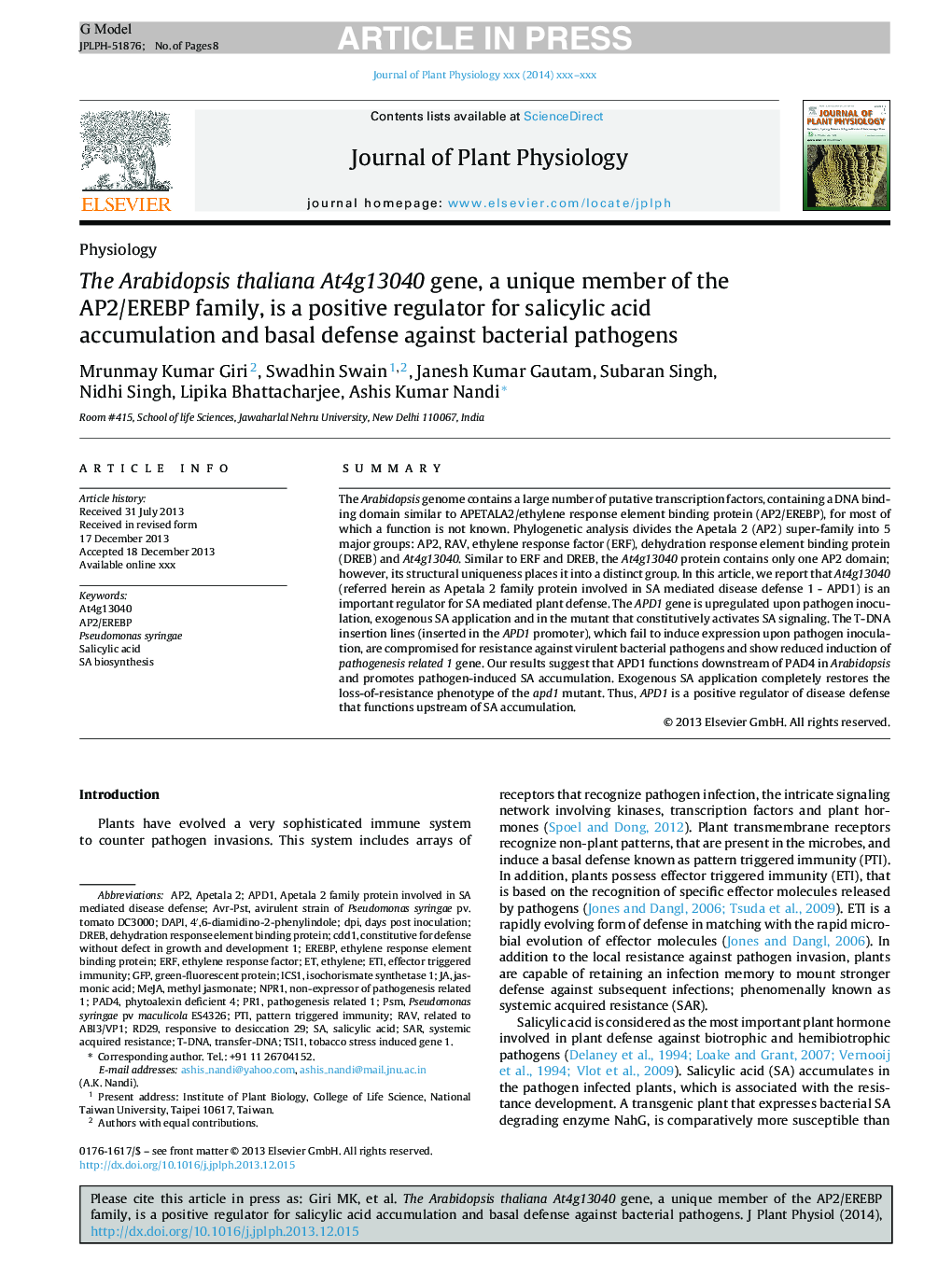| Article ID | Journal | Published Year | Pages | File Type |
|---|---|---|---|---|
| 10876870 | Journal of Plant Physiology | 2014 | 8 Pages |
Abstract
The Arabidopsis genome contains a large number of putative transcription factors, containing a DNA binding domain similar to APETALA2/ethylene response element binding protein (AP2/EREBP), for most of which a function is not known. Phylogenetic analysis divides the Apetala 2 (AP2) super-family into 5 major groups: AP2, RAV, ethylene response factor (ERF), dehydration response element binding protein (DREB) and At4g13040. Similar to ERF and DREB, the At4g13040 protein contains only one AP2 domain; however, its structural uniqueness places it into a distinct group. In this article, we report that At4g13040 (referred herein as Apetala 2 family protein involved in SA mediated disease defense 1 - APD1) is an important regulator for SA mediated plant defense. The APD1 gene is upregulated upon pathogen inoculation, exogenous SA application and in the mutant that constitutively activates SA signaling. The T-DNA insertion lines (inserted in the APD1 promoter), which fail to induce expression upon pathogen inoculation, are compromised for resistance against virulent bacterial pathogens and show reduced induction of pathogenesis related 1 gene. Our results suggest that APD1 functions downstream of PAD4 in Arabidopsis and promotes pathogen-induced SA accumulation. Exogenous SA application completely restores the loss-of-resistance phenotype of the apd1 mutant. Thus, APD1 is a positive regulator of disease defense that functions upstream of SA accumulation.
Keywords
SARTransfer-DNAEREBPICS1AP2/EREBPPTIT-DNAPseudomonas syringaeNPR1PAD4DREBPR1RAVDPIAP2DAPIPSMERFGFP4′,6-diamidino-2-phenylindoleApetala 2ETIEthyleneeffector triggered immunityjasmonic acidSalicylic aciddays post inoculationsystemic acquired resistanceethylene response factorMethyl jasmonateMeJAgreen-fluorescent protein
Related Topics
Life Sciences
Agricultural and Biological Sciences
Agronomy and Crop Science
Authors
Mrunmay Kumar Giri, Swadhin Swain, Janesh Kumar Gautam, Subaran Singh, Nidhi Singh, Lipika Bhattacharjee, Ashis Kumar Nandi,
